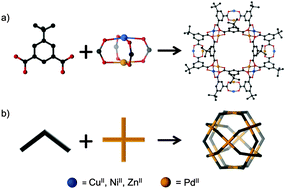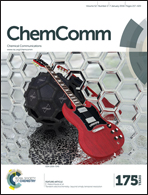Hetero-bimetallic metal–organic polyhedra†
Abstract
Porous metal–organic polyhedra (MOPs), constructed from heterometallic PdII–MII (M = Cu, Ni, Zn) paddlewheel nodes and 5-tert-butyl-1,3-benzenedicarboxylate organic links, were prepared in which the PdII ions preferentially line the inner surface of the cage molecules. Careful activation produces co-ordinatively unsaturated 3d transition metal sites on the external MOP surfaces giving rise to H2 adsorption enthalpies in excess of −12 kJ mol−1.


 Please wait while we load your content...
Please wait while we load your content...